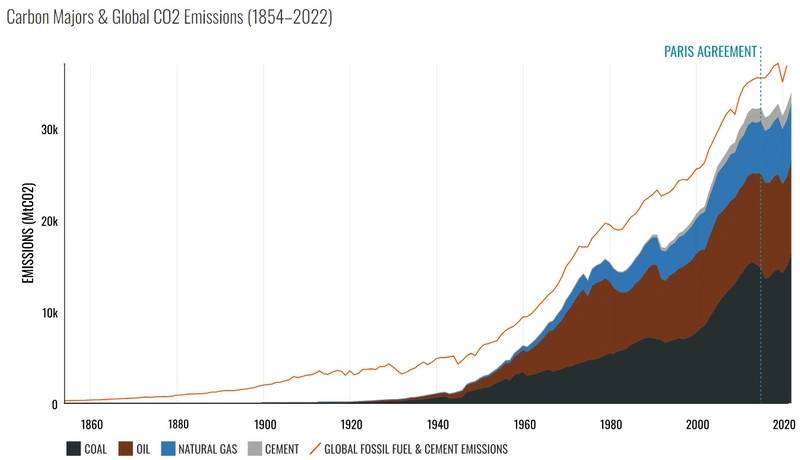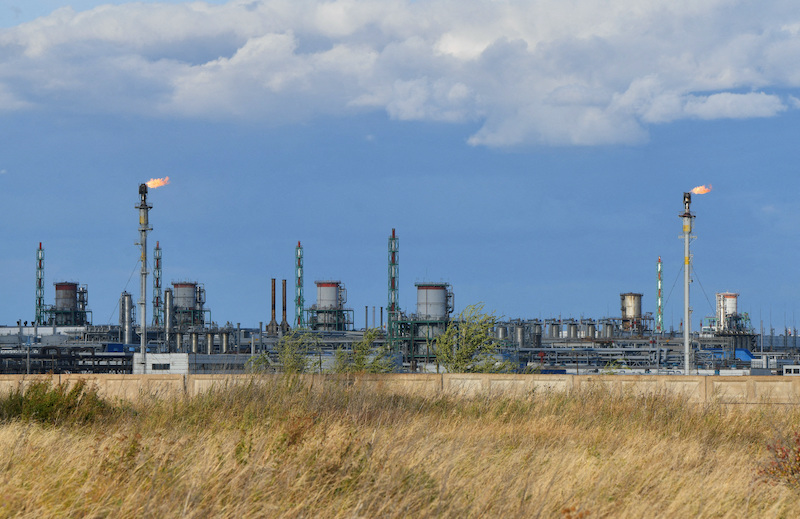The world’s biggest carbon dioxide emitters are state-owned oil and coal entities, according to a new report, which said the top three were Saudi Aramco, Russia’s Gazprom and Coal India.
These three are part of a group of just 57 fossil fuel and cement producers that made up the bulk of the world’s CO2 emissions since 2016, researchers said on Thursday.
From 2016 to 2022, the 57 entities including nation-states, state-owned firms and investor-owned companies produced 80% of the world’s CO2 emissions from fossil fuels and cement production, according to the Carbon Majors report by non-profit think tank InfluenceMap.
ALSO SEE: Yellen Warning to China on Oversupply Seen Falling on Deaf Ears
The top three CO2-emitting companies over the last eight years were Saudi Arabia’s state oil firm Saudi Aramco, Russian energy giant Gazprom and state-owned producer Coal India, the report said.
None of these three responded immediately to requests for comment.
The report found most companies had expanded their fossil fuel production since 2015, the year when nearly all countries signed the UN Paris Agreement, committing to take action to curb climate change.
Since then, while many governments and companies have set tougher emissions targets and rapidly expanded renewable energy, they have also produced and burned more fossil fuels, causing emissions to rise.
Global energy-related CO2 emissions hit a record high last year, the International Energy Agency has said.

Small group blamed for most global warming
InfluenceMap said its findings showed that a relatively small group of emitters were responsible for the bulk of ongoing CO2 emissions, and it aimed to increase transparency around which governments and companies were causing climate change.
“It can be used in a variety of cases, ranging from legal processes seeking to hold these producers to account for climate damages, or it can be used by academics in quantifying their contributions, or by campaign groups, or even by investors,” InfluenceMap programme manager Daan Van Acker said of the report.
A previous edition of the Carbon Majors database was cited last month in a legal case brought by a Belgian farmer against French oil and gas company TotalEnergies.
The farmer argued that as one of the world’s top 20 CO2-emitting companies, TotalEnergies was partly responsible for damage to his operations from extreme weather.
The database was first launched in 2013 by the non-profit research organisation Climate Accountability Institute.
It combines companies’ self-reported data on coal, oil and gas production with sources like the US Energy Information Administration, national mining associations and other industry data.
Carroll Muffett, CEO of the non-profit Center for International Environmental Law said the database would improve investors’ and litigators’ ability to track companies’ actions over time.
- Reuters with additional editing by Jim Pollard
ALSO SEE:
South Korea’s $313bn Loan Plan For Carbon-Cutting Projects
China Misses 2023 Emissions Targets, ‘Climate Credibility at Risk’
Cost of Carbon Capture by 2050 May be Double Estimates – IME
China Ramping up Its Transition to Clean Energy, Grid Storage
China Dominates Clean Energy, as Well as EV Batteries – FP
Australia Speeds up Its Transition to Green Power – SMH
US Startup, Singapore to Build an Ocean Carbon Removal Plant
























